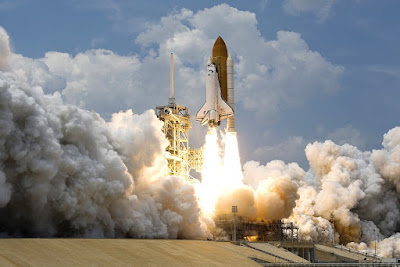Today, we have reached a huge leap in space exploration: commercial spaceflight, also known as "space tourism", but progress in space tourism is mostly due to billionaires and private development, most buyers being wealthy.
For example, booking a seat at Virgin Galactic costs two hundred and fifty thousand US dollars for a space trip, and when NASA said in 2019 that it would allow ordinary citizens to travel to the International Space Station, it set the cost of staying there at $35,000 per night and the price of getting there at about $50 million.
However, while we wait for prices to fall, there are still ways to experience space tourism on Earth. These ground adventures cover a range of experiments that mimic what you get in space, and suit the budget many people have.
1. Board a low-gravity aircraft:
If there is one constant force on Earth that is gravity, Earth gravity is humanity's scale of gravity elsewhere in the solar system, gravity varies in space from place to place.
For a space traveler, the amount of gravity there is zero Earth gravity, and for a person visiting another celestial object such as Mars (one third of Earth's gravity) or the Moon (one sixth of Earth's gravity). To simulate these differences in gravity, there are two companies offering zero-gravity flights.
American companies Zero G and European Air Zero G, which use modified aircraft to simulate different gravitational forces through a series of rotational flights. Over the course of the flight, pilots fly through manoeuvres that mimic Martian gravity, lunar gravity and zero gravity, and zero gravity is not quite zero, in fact weightlessness while dropping a free fall toward Earth, but don't think of the subject as such so as not to lose the pleasure that accompanies the flight.
The flight on Zero G ranges in cost from US $6,700 to US $9,500 and takes place in various states and cities in America throughout the year.
2. Visiting Mars in Spain:
Have you ever wondered what life on Mars really looks like? Astroland can answer this question. Obviously, this will be a harder task than its predecessor physically and psychologically, the Astroland program is similar to that of NASA (High Cess - HI-SEAS but it targets a broader tourist base. The operator of the Astroland programme is based in Spain and is expanding access to space tourism on the ground to more Europe.
The most prominent experiment in Astroland is Ares Station, a realistic environment built in a cave to simulate a possible settlement scheme on Mars. While details on how to join Astroland's mission are currently limited, the idea is for everyone to pay for a place on a team,
you will then undergo advanced training to determine your role on the team, and then spend specific time at Ares Station living and working full time including conducting research projects and providing data on the psychological impact of living in isolation.
Initial fees for this visit were announced in the region of Euro6,000 (US $7,000) for one month's training plus a three-day and three-night stay at Ares station.
3. Space camp:
If you prefer to keep your feet steady on the Earth's surface but still want to experiment with outer space, there is no better place than space camp. The camp became famous with the 1980s family film Space Camp and children have been attending the Huntsville space camp in Alabama for generations. There is also a program for adults for all who went as children or for those who missed the opportunity to join.
The Adult Astronaut Training Program, held at the end of the week, offers an opportunity to engage and learn about planetary science, orbital mechanics and NASA's past, present and future tasks. The space camp is located at the United States Space and Rocket Center and is part of the NASA Marshall Space Flight Center, and all programs are designed in coordination with NASA's actual missions.
This means that you can spend time simulating the experimentation of the Orion capsule and work on mission control and spacewalk (getting out of the craft to work on ISS modules) and before or after the adult space camp you can add training as an underwater astronaut!.
The cost is $199 to $299 per person for the space camp and $150 per person for the underwater program.
4. Trained as an astronaut in Star City:
You can follow in the footsteps of real astronauts -- American or Russian -- by participating in Space Adventures' astronaut training program that offers space tourism experiments ranging from watching space rocket launches in Kazakhstan to actually getting tourists to the International Space Station. But let's focus on what matters to us: real astronaut training.
Spaceflight training takes place in the city of stars in Russia near Moscow, and during the experiment participants learn how to fly the Russian Soyuz spacecraft in a simulator, train to spacewalk, and board the centrifuge to gain a better understanding of the gravitational forces they will encounter during launch and landing. This experiment offers a different view than others on this list because it focuses on Russia's Roscosmos space program instead of NASA.
Space Adventures spaceflight training is a dedicated experience, and the price is available upon request.


Comments
Post a Comment